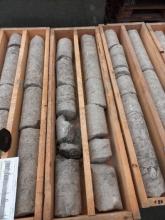Project name: Grube Königstein - Uranium background in groundwater of the mine of Königstein
Project duration: 01.09.2022 - 31.12.2024 (2 years)
Funding organization: Sächsisches Landesamt für Umwelt, Landwirtschaft und Geologie (LfULG)
Project number: 105-2494121 (Vergabe Nr.)
Contact person: Sebastian [dot] Schramm [at] geo [dot] tu-freiberg [dot] de (Sebastian.Schramm), Traugott [dot] Scheytt [at] geo [dot] tu-freiberg [dot] de (Prof. Dr. Traugott Scheytt)
Project partners:
Senckenberg research: Dr. M. Wilmsen, Dr. B. Niebuhr, M. Melchisedech
Friedrich-Schiller-Universität Jena: Dr. T. Voigt, M. Mücklisch
TU Berlin: Dr. F. Schiperski (Angewandte Geochemie)
Helmhotz-Zentrum-Dresden-Rossendorf: Prof. V. Brendler
Vorhaben: Angewandte Forschung zur Gesteinsanalytik und Geochemie der tieferen Oberkreide und Ableitung von lndikatoren und Strategien für die Ermittlung des Uran-Hintergrundwertes als Beitrag zur Behebung der Bergbaufolgen der Uranerzgrube Königstein Forschungs- und Entwicklungsvertrag.
To assess the increase in water level at the former uranium mine Königstein, it is imperative to establish the natural background concentrations of uranium in the 4th aquifer. The hydrochemical conditions have undergone alterations due to mining activities. This project endeavors to determine the pre-mining uranium content in groundwater through batch experiments, aiming to simulate the interaction between rock materials and groundwater. The solid material is represented by samples from drill cores, while water is simulated by recent inflows into the mine. Our methodology involves employing geochemical and mineralogical methods to analyze sandstones, conducting hydrochemical analyses of water samples from the field, and performing batch tests.
In our analytical approach, we utilize the hypothesis of chemical equilibrium, employing PHREEQC to model crucial reactions such as surface complexation, solution, and precipitation.
Collaborating with project partners from the Senckenberg Research Society and the Friedrich University of Jena, the lithology and stratigraphy of Cenomanian and Turonian sediments at the Pirnaer Paläosink are being reevaluated."
